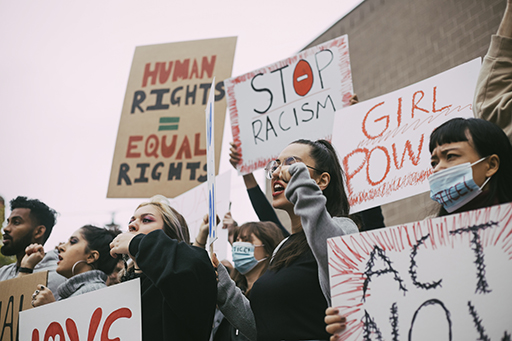1.2 How to get started with making change
Change can be focused on:
- The political; for example, campaigning for a change of government or to change a policy.
- The social; changing how something works in society, such as the rights a group has.
Of course, these things overlap – campaigning for a social change may lead to political change. Change can be big or small. It could be a small individual action which leads to a much bigger change. There are lots of different ways you can make change, whether that’s by engaging with the UK Parliament to get your voice heard or by using other channels.
Read below for guidance on how to get started:
- Do your research: it’s important to gather all the facts, the names of key people and organisations, and information about the best approach to making change; read the news and keep on top of the issue and different opinions surrounding it – try and understand the ‘other side’ of the argument as this will help you make your argument
- Work out your aims: what are you trying to achieve? It is useful to have a limited number of clear objectives; focusing on informed solutions can be useful
- Reach out to others: you may be able to join in with a pre-existing campaign or make your own campaign stronger by working with others
- Identify your target: who is the best person or group to approach to make change? Who is the decision maker? Who is responsible? This could be an individual, multiple people, an organisation, council or parliament, or the general public – it depends on what your aims are
- Think about timing: too early and you may not have an impact, too late and you may not be able to influence. Recognise the topicality of an issue, and when decision makers might be receptive to certain arguments
- Think about mode: should your focus be social media, a formal report, or speaking at public meetings? What are your skills? You will probably need to campaign in more than one mode
- Think about accessibility: make sure as many people as possible are able to engage with your content (for instance, providing subtitles on videos, or the transcript of a speech)
- Contact your representatives: if you hope to change the law, you may need to contact or lobby your elected representative; this could be a councillor or a member of a parliament or assembly (such as the UK Parliament)
- Publicise your campaign: think about the best way to promote your cause. You could utilise social media, write letters to newspapers, and speak at meetings and events for instance
- Finally: start small: small actions can lead to big change!
In relation to mode, and the skills and confidence needed to communicate change via public speaking, you may find it useful to read ‘Dare to speak up’, a guide to communicating change via persuasive speech [Tip: hold Ctrl and click a link to open it in a new tab. (Hide tip)] .
Activity 1: getting started with making change
Think about whether there are any national or international issues that you are passionate about and how you could get involved. Think about whether there are already people or groups campaigning about this issue, and what level of involvement you can commit to (this could be as simple as signing a petition, or writing about it on social media, or it could involve a bigger time commitment).
One of the ways you may want to make change if you are based in the UK is through the UK Parliament. Read on to see how you can do this.

